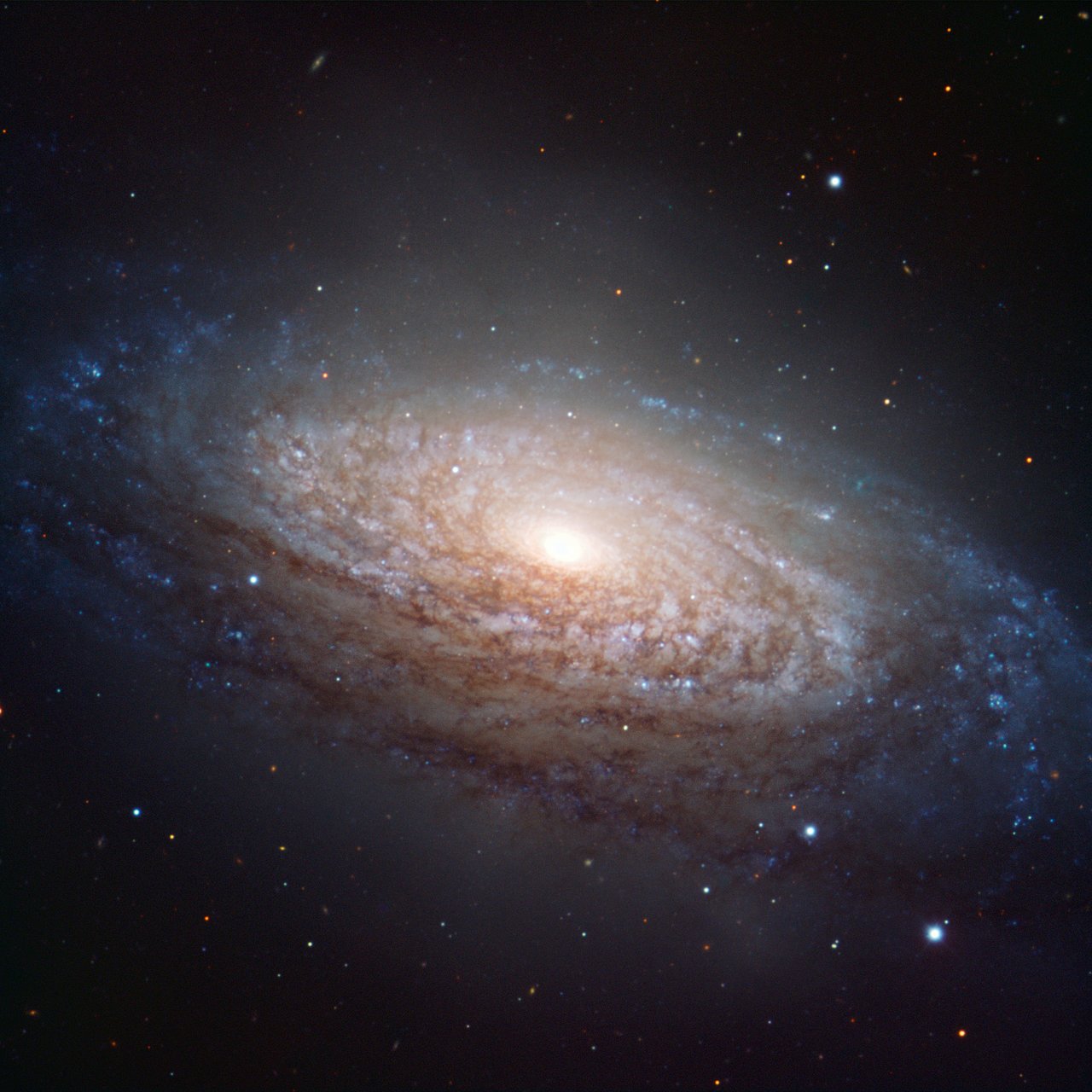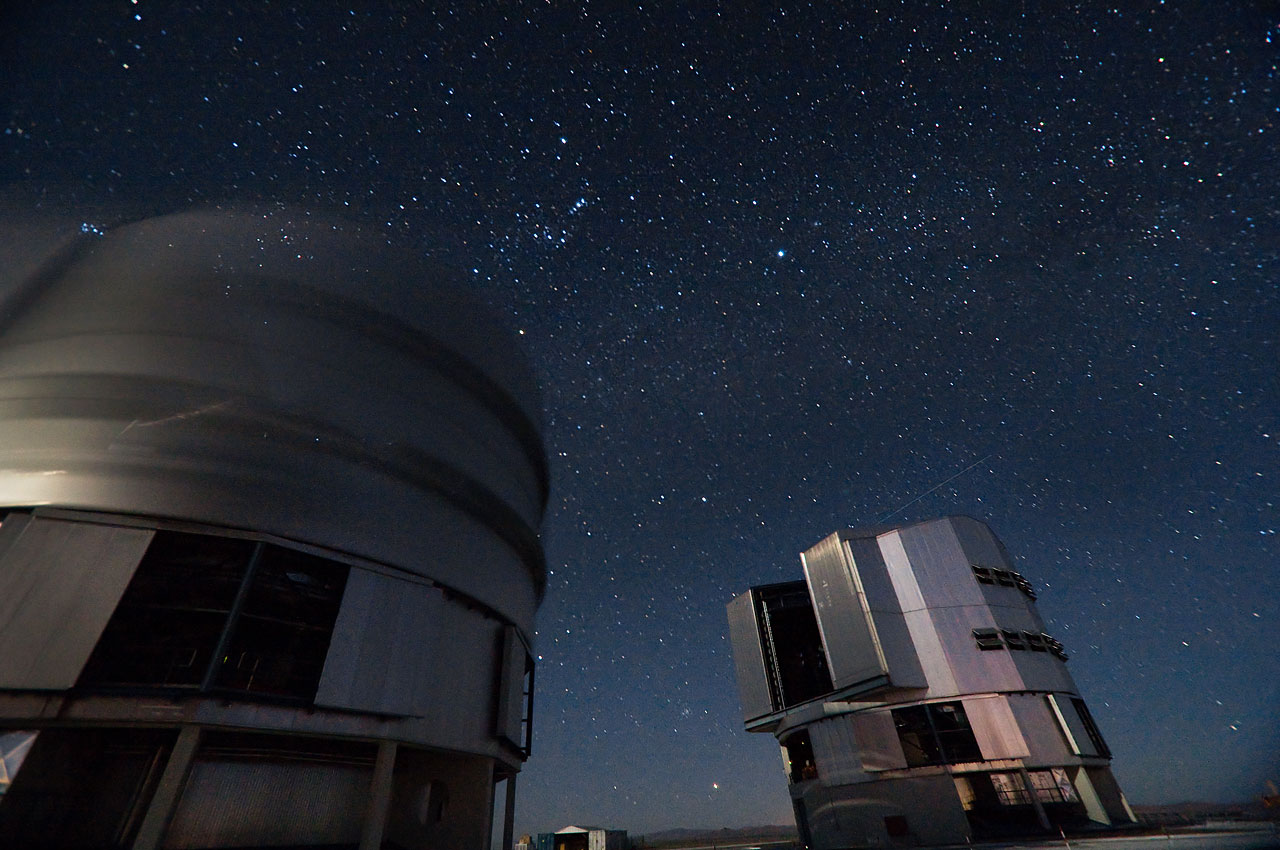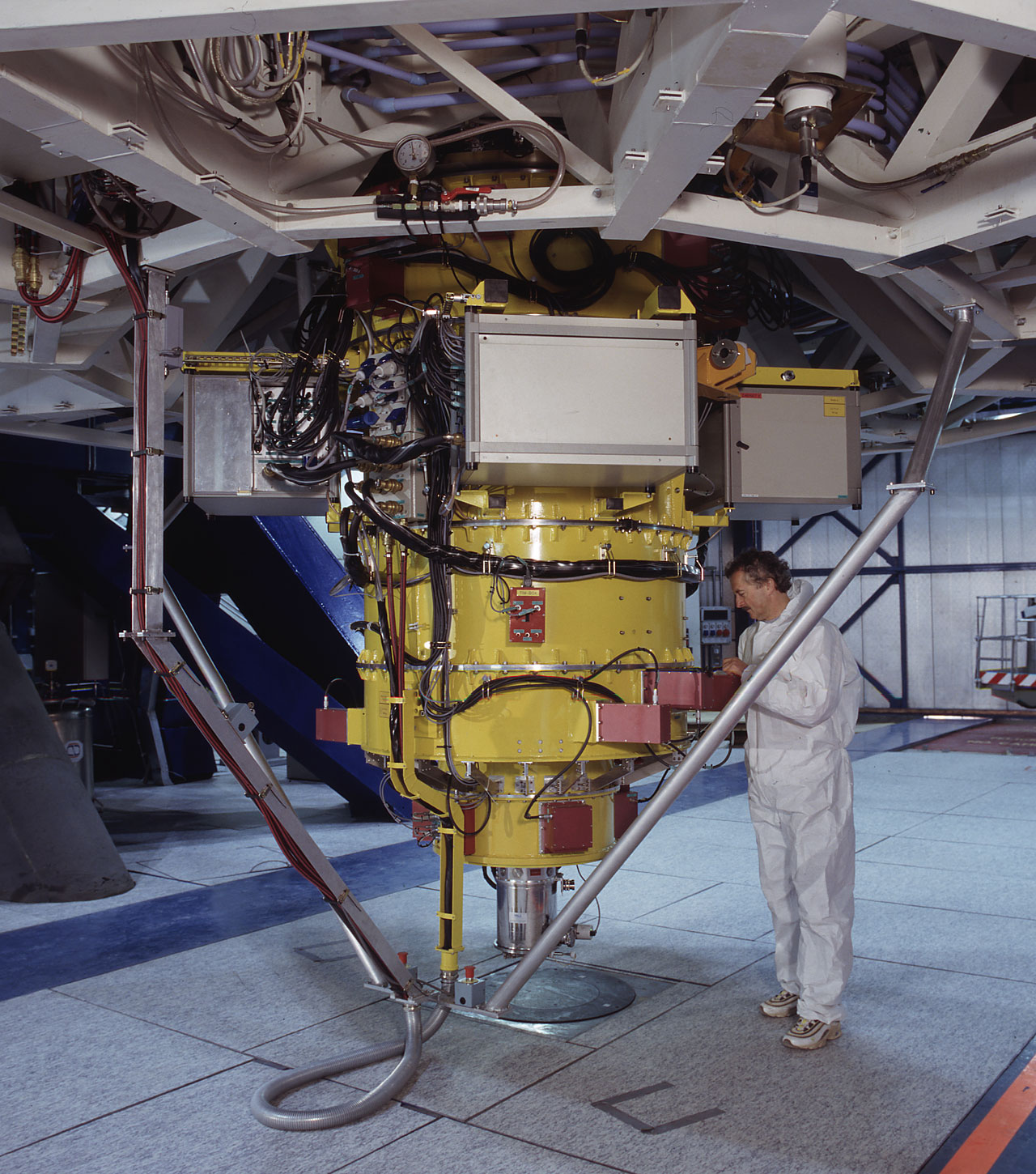 Image Credit: Oleg Maliy/ESO
Image Credit: Oleg Maliy/ESO
Just waiting for an Elton John sound track, this 35 million light year distant galaxy, is the best of the pride....... in the constellation Leo. See I was getting around to the Lion thing....or should I say king.
At 50 lights years across NGC 3521 is quite bright but was not included in Messier's list, even though it was the same brightness as others included in his list compiled in the 1700s.
Oleg Maliy, who participated
ESO’s Hidden Treasures 2010 competition, selected the data from the FORS1 instrument on ESO’s VLT at the Paranal Observatory in Chile that were used to create this dramatic image. Exposures taken through three different filters that passed blue light (coloured blue), yellow/green light (coloured green), and near-infrared light (coloured red) have been combined to make this picture. The total exposure times were 300 seconds per filter. Oleg’s image of NGC 3521 was a highly ranked entry in the competition, which attracted almost 100 entries.

Image Credit: Iztok Boncina/ESO
The most distinctive features of the bright galaxy NGC 3521 are its long spiral arms that are dotted with star-forming regions and interspersed with veins of dust. The arms are rather irregular and patchy, making NGC 3521 a typical example of a flocculent spiral galaxy. These galaxies have “fluffy” spiral arms that contrast with the sweeping arms of grand-design spirals such as the famous Whirlpool galaxy or M 51.

Image Credit: ESO/H.Zodet
This view of the FORS1 astronomical instrument, installed at the Cassegrain focus of UT1. It was mounted in September 1998 and has since produced a long series of excellent observations, both images and spectra. Some of these have resulted in spectacular views of astronomical objects, cf., e.g., ESO Press Photos eso9846 and ESO Press Photos eso9857. The second FORS1 commissioning phase was carried out in late December 1998.
ESO's innovation in providing access to archival photos for amateurs has been a feature of their brilliant outreach program, that makes them, today, the Lion Kings.
ESO, the European Southern Observatory, is the foremost intergovernmental astronomy organisation in Europe and the world’s most productive astronomical observatory. It is supported by 15 countries: Austria, Belgium, Brazil, the Czech Republic, Denmark, France, Finland, Germany, Italy, the Netherlands, Portugal, Spain, Sweden, Switzerland and the United Kingdom. ESO carries out an ambitious programme focused on the design, construction and operation of powerful ground-based observing facilities enabling astronomers to make important scientific discoveries. ESO also plays a leading role in promoting and organising cooperation in astronomical research. ESO operates three unique world-class observing sites in Chile: La Silla, Paranal and Chajnantor. At Paranal, ESO operates the Very Large Telescope, the world’s most advanced visible-light astronomical observatory and two survey telescopes.


 Image Credit: Oleg Maliy/ESO
Image Credit: Oleg Maliy/ESO




